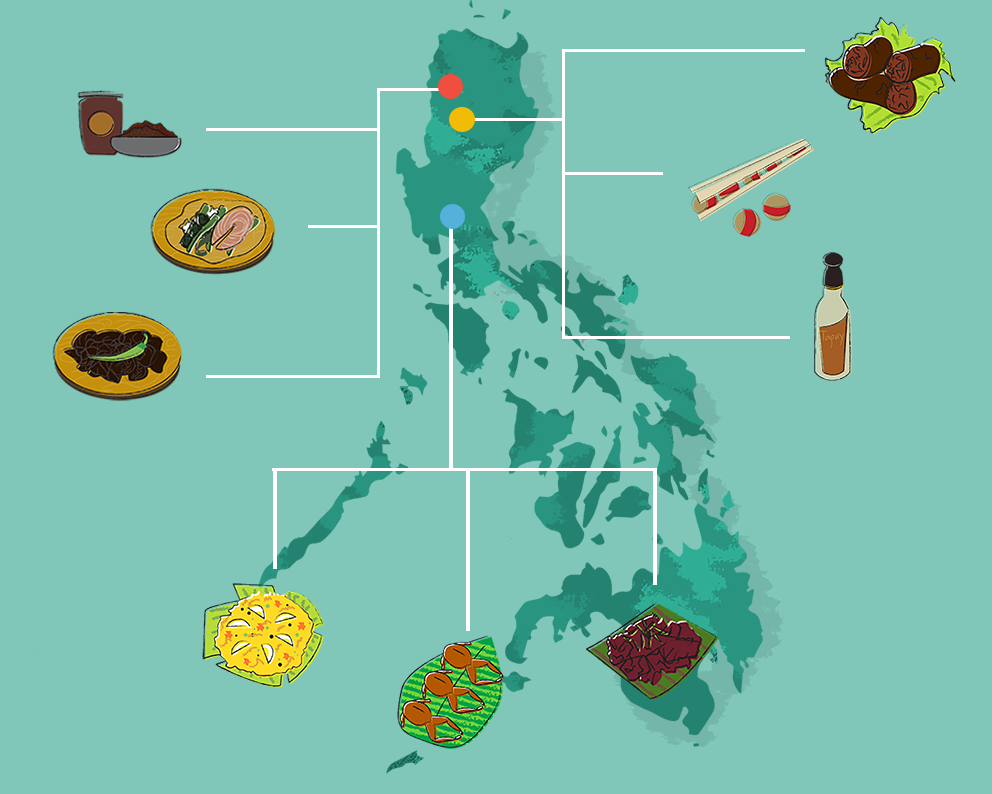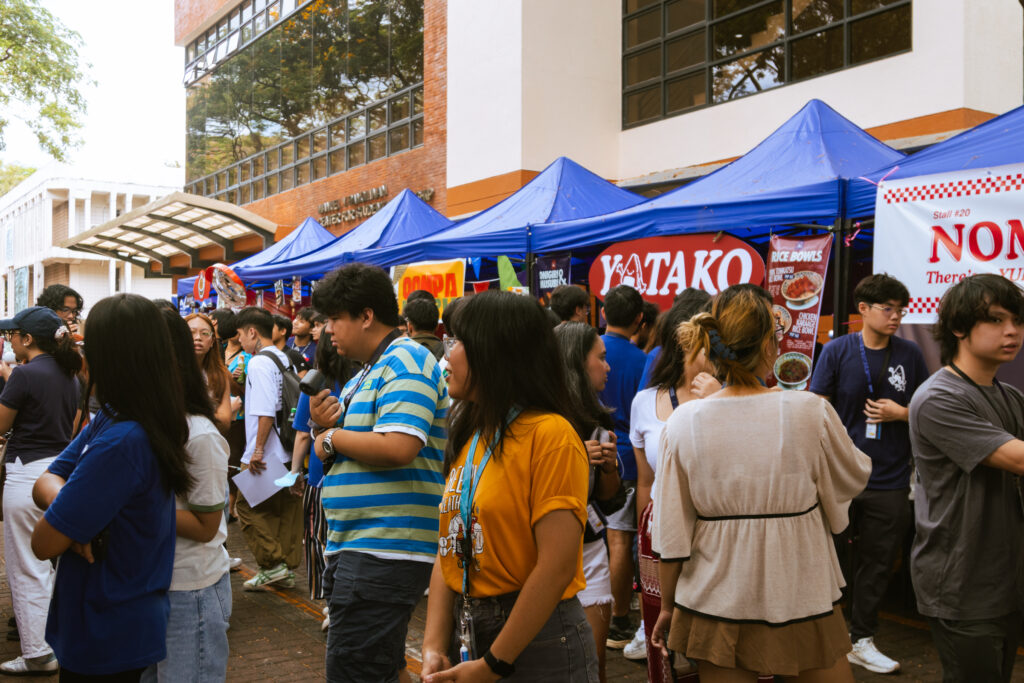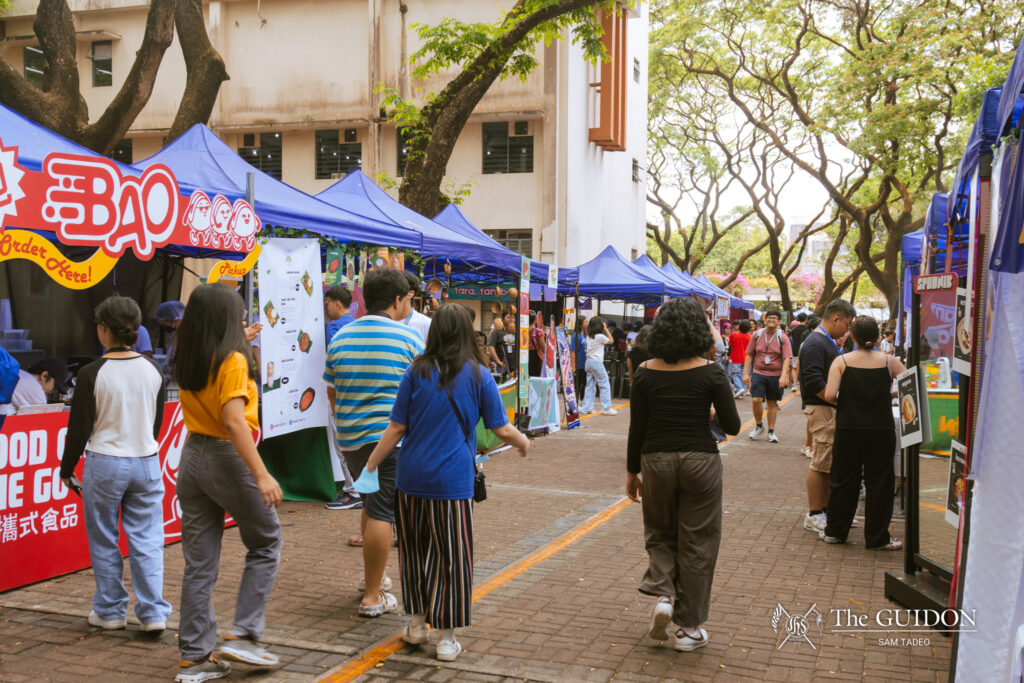Sinigang, lechon manok, and krispy pata are only some of the dishes we automatically reference when we think of Filipino food. When we read articles online about Filipino cuisine, these common culprits are always there, as if adobo and rice surmised our entire gastronomical landscape. Eschewing this generalization (and chewing on some Filipino food for thought), Vantage has decided to explore the side of our cuisine that we don’t often get to see.
A country is usually represented by its mark upon the map, its language, and its people, but the bigger picture is missed at the expense of its culture. This Vantage food series brings back the Filipinos to what truly defines them: The food they eat and how they prepare them. The Filipino is not merely one identity but many, the same way that Filipino food comes out of our country’s rich and diverse history. Variations in food culture, for one, are largely geographical, and each region or area speak a different story about its traditions and people.
Cuisine of Northern Luzon
Depending on each province’s location, ingredients vary from meats to seafood, salty to sweet, as each area’s geography differs from region to region.
Ilocanos make use of fermentation to enhance the flavors of their fresh livestock. Bagoong, used in various provinces around the country, is used generously to flavor boiled vegetables to produce dishes like pinakbet or dinengdeng. The provinces of Bulacan and Pampanga are as known for their sweet and savory delicacies as they are for their wide agricultural lands and rivers. Desserts made from rice and coconut milk polish off palates after meticulously stewed dishes of meats and shellfish. If you are weary of the food in the city, then a trek up to the north is a must for reenergizing palates.
ILOCOS
Bagoong monamon and bagoong terong
Unlike the conventional shrimp paste (bagoong alamang) that graces our tables, bagoong monamon (or “bugguong munamon”) is fermented anchovy that is usually sold with bits of the fermented fish in it. A boneless option is also available on the market but one has to consume it fast; it turns into patis if left undisturbed for some time.
On the other hand, bagoong terong comes from fermenting the bonnet mouth fish, resulting in a coarser paste than monamon with bits of the fish packaged in it.
Dinengdeng
Dinengdeng, also called “inabraw,” is a soup flavored with bagoong, mixed with okra, malunggay, ampalaya, eggplant, squash, and string beans. Protein in the form of leftover fish or shrimp may also be added. It is more watery than pinakbet because it is made to be a soup or stew.
Dinardaraan
Dinardaraan comes from the Ilocano word “dara” which means blood. If you’ve ever graced upon Kanin Club’s (a casual Filipino restaurant known for its homestyle cooking, highly recommended) “crispy dinuguan” then you have some idea of the Ilocanos’ version of the dinuguan we all know and love. Though made from the same ingredients of pork innards, meat, and blood, dinardaraan is drier with less stew to sop up with your puto. The meat and innards are first cooked until it is crispy, and then mixed with the blood. If you are wary of the regular dinuguan, this is a yummy way to start loving it.
Note: Kanin Club has branches in Westgate Mall, Alabang, Muntinlupa, UP—AyalaLand Technohub, Commonwealth Ave., Quezon City, Ayala Triangle Gardens, Makati, and Paseo de Santa Rosa, Sta. Rosa, Laguna.
BAGUIO
Sundot-kulangot
Literally translating to “picked boogers,” this popular snack feels (but does not taste, thank goodness) exactly as it is named. Made from coconut milk, rice, and sugar, these candies are shaped and packaged in small spherical shells that come encased in bamboo sticks. Each shell is sealed by the iconic red paper that is glued to hold the two halves together, and the snack is “picked out” by one’s fingers as if you were picking your nose.
Tapuy
Tapuy is Baguio’s own rice wine, similar to the more popular tuba. The name is derived from tapai, a fermented rice dish popular in other Southeast Asian countries. Tapuy is traditionally consumed during special occasions such as weddings, rice harvesting ceremonies, and fiestas. Typically made from glutinous rice mixed with onuad roots, ginger extract, and a powdered culture locally known as bubod, tapuy is described to be a clear wine with a full-bodied flavor. Though slightly sweet with an alcoholic content anywhere form 14-28%, tapuy is not diluted with water and contains no sugar.
An added bonus: Tapuy contains no sulfites—preservatives commonly used in wines that trigger allergic reactions or hang-overs—perfect for those who suffer from “Asian Flush.”
Pinuneg
Essentially a blood sausage, pinuneg can be classified as another twist on the famous dinuguan as it features pig’s blood and innards as its main ingredients. Similar to the beloved longganisa, the meat is mixed with rice, garlic, vinegar, and then encased in pig’s intestines to assume a tubular shape.
PAMPANGA + BULACAN
Bringhe
Bringhe is a rice dish that exudes the same bright yellow color as Spanish paella. It is usually made with vegetables such as bell peppers and onions that are then mixed with chicken and chorizo. The dish has evolved over time to include garnishes such as raisins and green peas. Glutinous rice is mixed with coconut milk and turmeric, which gives the dish its distinct yellow hue, and is then covered with banana leaves until it is cooked through. Not just for decoration, the banana leaves lend a sweeter flavor. Though this delectable dish is usually reserved for fiestas and special occasions, it is easy enough to make to enjoy any day.
Batute
Making its way from your dissection table to your plate, batute or “stuffed frog” is an exotic delicacy that gives you reason to venture out of your comfort zone. Made with palakang bukid (mountain frog), it is first cleaned and gutted to be prepped for the immense filling of ground pork or beef seasoned with salt, vinegar, and garlic. The frogs are first sun-dried for half an hour before being deep-fried for that crispy, golden skin. Ahh, tastes just like chicken.
Pindang Kalabaw
Locally called “pindang damulag”, the dish is composed of beef jerky made from carabao meat. If tasting for the first time, don’t make the mistake of throwing away a perfectly good piece based on the sourness of the jerky. Just think of it as a beef tapa that is made with salt, sugar, and vinegar.
Next course, please
If broken down into the basic ingredients and ways of cooking, northern cuisine is actually just a mirror image of fares we are already familiar with. Several dishes that were featured in this list are colorful variations of pakbet, tapa, and dinuguan. Stay tuned for more food revelations in the upcoming editions of this series, where you will see that there is more to just adobo and lechon than meets the menu in this archipelago of eats.






